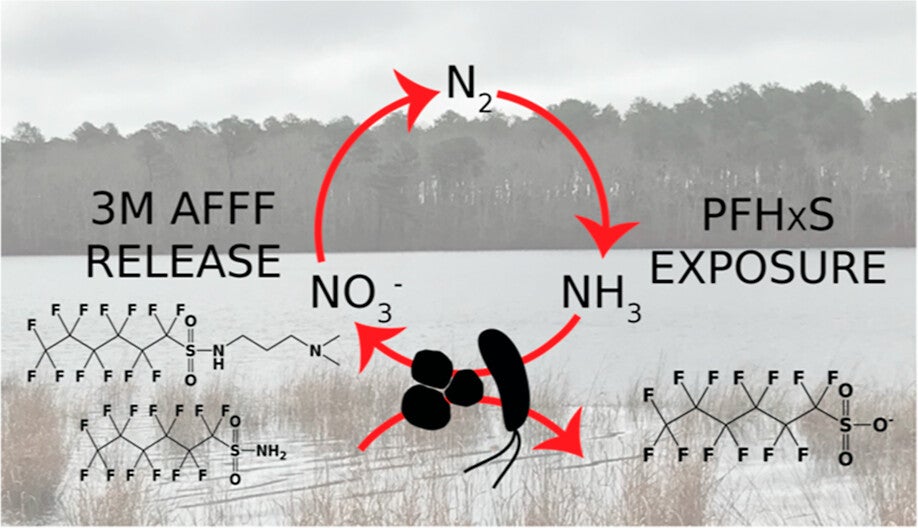Thousands of molecules are included within the per- and polyfluroalkyl substances (PFAS) group. The most well-known are large PFAS that make up everyday materials, but there are also thousands of smaller “precursor” molecules that are made during the manufacturing process. Precursors can be transformed into even smaller “terminal” perfluoroalkyl acids (PFAAs), which have health concerns for people and the environment. This transformation can happen spontaneously by “abiotic”, or nonliving, processes, or they can be mediated, and usually sped-up, by biology.
Microorganisms in soil and water are key players in nutrient recycling, breaking down organic matter and natural chemicals to release nitrogen, phosphorous, and other ingredients for life. Some microbes can even break down industrial pollutants, like oil, plastics, and even PFAS. Unfortunately, most microbes can’t be cultured in the lab due to highly specific requirements for growth, and many have yet to be identified by scientists. Much less is known about how microbes break down industrial pollutants (a process called biotransformation). The goals of many research studies are to understand both what can catalyze biotransformation and what happens at the molecular level during the process.
Sites where Aqueous Film-Forming Foam (AFFF) was historically used are often major sources of precursor molecules and terminal PFAS, which can persist in the environment for centuries. While concerning for groundwater and drinking water, these sites are excellent habitat for PFAS-transforming bacteria. A recent study from the Harvard University Sunderland Lab investigated the role of nitrogen-cycling bacteria in the biotransformation of PFAS in soil from an AFFF-contaminated military base in Cape Cod, Massachusetts.
Researchers collected samples for groundwater and lake sediment from Ashumet Pond, MA, a lake that receives PFAS contamination from a former AFFF fire-training area. Samples were used to create contained experiments called microcosms and monitored changes in microbial species over time with and without the addition of precursor PFAS molecules. The study also measured nitrogen and identified which kinds of PFAS and PFAA molecules were present in the microcosms over time. Microcosm and environmental data were used to model how rapidly a natural microbial population could transform PFAS into PFAAs.
Microcosms demonstrated that bacteria rapidly absorbed PFAS precursors and stored them inside their cells. Very few terminal PFAAs were secreted from the cells over the 60-day experiment, though it was estimated that the bacteria in the microcosms would take more than three years to convert all the PFAS into terminal PFAAs. Modeling results and data from environmental samples show that bacteria may take even longer to biotransform PFAS derivatives in the environment because microbes are most productive during the summer and nearly inactive during the winter. Microbes were kept at a constant temperature in the microcosms and performing at rates expected for summer, which may have resulted in overestimation of processed PFAS.
Research concludes that soil and groundwater microbiomes are important for controlling the transformation of PFAS precursors as well as mobility between groundwater and surface water, and further understanding could be leveraged to better inform risk assessment and potential remediation strategies.
Ruyle, B.J., Schultes, L., Akob, D.M., Harris, C.R., Lorah, M.M., Vojta, S., Becanova, J., McCann, S., Pickard, H.M., Pearson, A., Lohmann, R., Vecitis, C.D., Sunderland, E.M. 2023. Nitrifying Microorganisms Linked to Biotransformation of Perfluoroalkyl Sulfonamido Precursors from Legacy Aqueous Film Forming Foams. Environ. Sci. Technol. 57, 5592-5602. DOI: https://doi.org/10.1021/acs.est.2c07178


